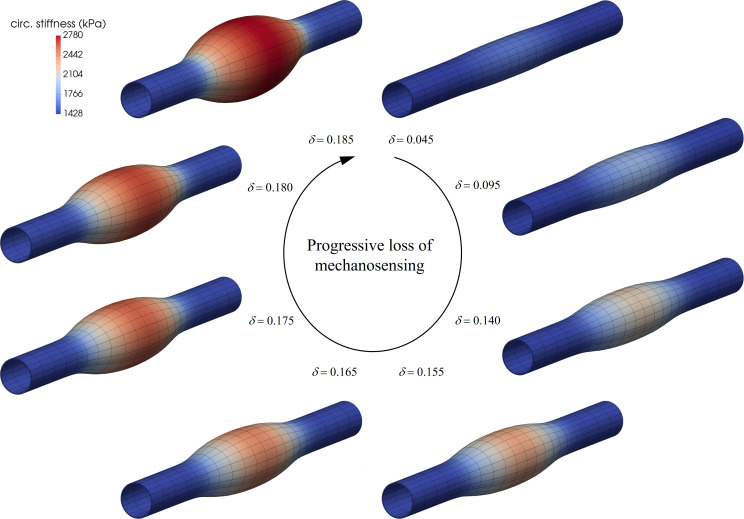Fig 3. Mechanobiologically (quasi)equilibrated, progressive dilatation of an initial non-aneurysmal aortic segment with increasingly greater losses of mechanosensing δ>0 (clockwise from the upper right mesh).
Note that the dilatation tended to asymptotic for δ→0.185+, suggesting the presence of a mechanobiological static instability [33] while maintaining inner pressure Ph = Po. Indeed, equilibrium solutions for δ≥0.185+ could not be achieved using standard Newton-Raphson global finite element iterations (hence defining the severe case in Figs 1 and 2 at δ = 0.185), suggesting the need for path-following (e.g., arc-length) methods to better capture numerically, and advance quasi-statically, these nearly-singular unstable responses.

